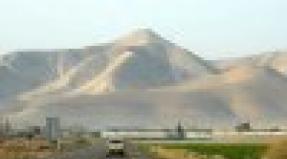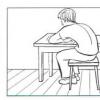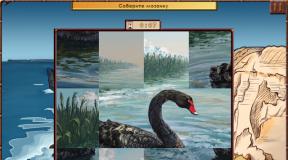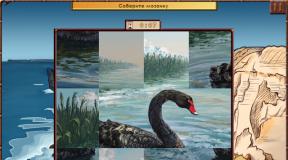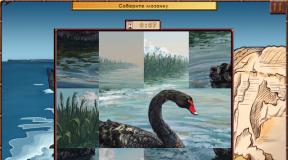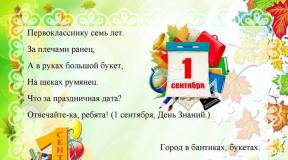The most important events in history. Dates of the history of Russia. Catholic League
965 - The defeat of the Khazar Khaganate army of the Kiev prince Svyatoslav Igorevich.
988 - Baptism of Russia. Kievan Rus accepts Orthodox Christianity.
1223 - Battle on the Kalka- the first battle between the Russians and the Mughals.
1240 - Neva battle- a military conflict between the Russians, led by the Novgorod prince Alexander and the Swedes.
1242 - Battle on Lake Peipsi- a battle between the Russians, led by Alexander Nevsky and the knights of the Livonian Order. This battle went down in history as the Battle on the Ice.
1380 - Battle of Kulikovo- a battle between the united army of Russian principalities led by Dmitry Donskoy and the army of the Golden Horde led by Mamai.
1466 - 1472 - journey of Athanasius Nikitin to Persia, India and Turkey.
1480 - The final deliverance of Russia from the Mongol-Tatar yoke.
1552 - Capture of Kazan Russian troops of Ivan the Terrible, the cessation of the existence of the Kazan Khanate and its inclusion in the Muscovite Russia.
1556 - Accession of the Astrakhan Khanate to Moscow Rus.
1558 - 1583 - Livonian War. The war of the Russian kingdom against the Livonian Order and the subsequent conflict of the Russian kingdom with the Grand Duchy of Lithuania, Poland and Sweden.
1581 (or 1582) - 1585 - Yermak's campaigns in Siberia and battles with the Tatars.
1589 - Establishment of the Patriarchate in Russia.
1604 - The invasion of False Dmitry I in Russia. Beginning of the Time of Troubles.
1606 - 1607 - Bolotnikov's uprising.
1612 - The liberation of Moscow from the Poles by the people's militia of Minin and Pozharsky End of the Time of Troubles.
1613 - Rise to power in Russia of the Romanov dynasty.
1654 - Pereyaslav Rada decided to reunification of Ukraine with Russia.
1667 - Andrusovo truce between Russia and Poland. Left-bank Ukraine and Smolensk went to Russia.
1686 - "Eternal Peace" with Poland. Russia's entry into the anti-Turkish coalition.
1700 - 1721 - North War- fighting between Russia and Sweden.
1783 - Annexation of Crimea to the Russian Empire.
1803 - Decree on free cultivators. The peasants received the right to redeem themselves with land.
1812 - Battle of Borodino- a battle between the Russian army led by Kutuzov and the French troops under the command of Napoleon.
1814 - The capture of Paris by Russian and allied troops.
1817 - 1864 - Caucasian war.
1825 - Decembrist revolt- armed anti-government rebellion of officers of the Russian army.
1825 - built first railroad in Russia.
1853 - 1856 - Crimean War. In this military conflict, the Russian Empire was opposed by England, France and the Ottoman Empire.
1861 - The abolition of serfdom in Russia.
1877 - 1878 - Russo-Turkish War
1914 - Start of World War I and the entry of the Russian Empire into it.
1917 - Revolution in Russia(February and October). In February, after the fall of the monarchy, power passed to the Provisional Government. In October, the Bolsheviks came to power through a coup.
1918 - 1922 - Russian Civil War. It ended with the victory of the Reds (Bolsheviks) and the creation of the Soviet state.
* Separate outbreaks of the civil war began in the autumn of 1917.
1941 - 1945 - War between the USSR and Germany. This confrontation took place within the framework of the Second World War.
1949 - Creation and testing of the first atomic bomb in the USSR.
1961 - First manned flight into space. It was Yuri Gagarin from the USSR.
1991 - The collapse of the USSR and the fall of socialism.
1993 - Acceptance of the constitution by the Russian Federation.
2008 - Armed conflict between Russia and Georgia.
2014 - Return of Crimea to Russia.
Chronicle of events, 1350 - 1648
1356 - Battle of Poitiers
On September 19, one of the greatest battles of the Hundred Years War took place. On the one hand, French troops under the leadership of King John II the Good participated in it, and on the other hand, English troops under the leadership of the Black Prince Edward. Despite the overwhelming numerical superiority of the French, the British won a decisive victory, and the French king was captured.
1361 - Rise of Tamerlane
In 1361, Timur the conqueror left the submission of the Mongol Khan and went over to the side of his enemies. He led the life of an adventurer and during one of the skirmishes he lost two fingers of his right hand, and was also seriously wounded in his right leg. Because of the consequences of this injury, he suffered all his life, with which many attribute his cruelty, unusual even for those times. Lameness gave him the nickname "lame Timur" - Timur-e lang - later turned into the surviving "Tamerlane".
1378 - Great Schism
In 1377, the last Pope of the Avignon Captivity, Gregory XI, decided to return from Avignon to Rome. However, he died shortly thereafter, and then a split occurred in the Roman Catholic Church: the first election of the Pope was held under pressure from the Roman crowd and was declared invalid. The elected pope was excommunicated, and the election of a new pope soon took place. However, Urban VI, elected first, continued to perform the functions of Pope from Rome, and Clement VII, elected second, retired back to Avignon. Following the split of the church, there was a split among the European countries. The final point in this story was put only in 1417, with the beginning of the reign of Pope Martin V.
1380 - The emergence of the Kalmar Union
In the XIV century, the Scandinavian countries experienced great difficulties associated with the monopolization of trade in the Baltic by the German free cities and the Hansa. This was opposed by the unification of Denmark, Norway and Sweden in a union under the supreme authority of the Danish kings. At the same time, countries sacrificed their sovereignty, but formally remained independent. In 1380, Denmark and economically dependent Norway were the first to unite and enter into a union under the rule of Queen Margaret.
1381 - Peasants' revolt in England
In 1381 there was an uprising that became the largest in the history of medieval England. During it, the rebels managed to capture Canterbury and London, and then stormed the Tower. King Richard II was forced to negotiate and even promised to fulfill the numerous demands of the rebels, among which were the abolition of serfdom and equalization of the rights of all classes. However, during the second meeting, the king's associates killed the leader of the rebels, Wat Tyler, after which the uprising was crushed.
1389 - Battle of Kosovo
In 1389, one of the largest battles between Christians and the Ottoman Empire took place. On July 28, the army of the Serbian prince Lazar, numbering 80,000, converged with the army of Murad, numbering about 300,000 people. During the battle, both leaders were killed and the Serbian army was defeated. But, despite this, Serbia formally retained its independence, although it paid tribute and undertook to supply the Turkish Porte with an auxiliary army.
1392 - An attack of madness at Charles VI
In August 1392, King Charles VI of France experienced his first bout of insanity. Later, the king's illness led to a long civil war, which ended with the collapse of France as a state. Part of its territory was captured by the British, and part was under the control of the princes of the blood, who became virtually independent rulers. The king's successors had to start over from scratch - expel the British, rein in the princes and restore the basic mechanisms of state.
1393 - Allowed to play chess
From the moment of penetration into Europe, the game of chess caused constant discontent of the Church. In 1161, the Catholic Cardinal Damiani issued a decree banning the game of chess among the clergy. Subsequently, such prohibitions were issued not only by church leaders, but also by secular rulers - the English king Edward IV, the French Louis IX, and the Polish monarch Casimir IV. However, many continued to play chess underground, and in 1393 the ban was finally lifted at the Regenburg Cathedral.
1396 - Nikopol Crusade
In 1396, the last major crusade of the Middle Ages took place. A large army of crusaders concentrated under the leadership of the Hungarian king Sigismund, Count John of Nevers and others. However, the Crusaders suffered a brutal defeat by the Turks at the Battle of Nicopolis, which forced them to abandon their future plans.
1408 - Rebirth of the Order of the Dragon
December 13, 1408 Holy Roman Emperor Sigismund I of Luxembourg revives the previously existing Order of the Dragon. The order included the best of the knights, and its goals were the tasks of protecting the Cross of the Lord from the Turks. The distinctive sign of the order was medallions with the image of a dragon curled up into a ring.
1410 - Battle of Grunwald
On July 15, 1410, the army of the Teutonic Order entered into battle with the combined army of the Kingdom of Poland and the Grand Duchy of Lithuania. The battle ended with the defeat of the Teutonic troops, which significantly undermined the influence of the Order, which later led to its collapse.
1415 - Execution of Jan Hus
In 1415, Jan Hus, who by that time was one of the prominent reformers of the Czech Republic, arrived in Constanta for the cathedral. His goal was to unite the split Roman Catholic Church. Despite the fact that the Holy Roman Emperor promised him personal safety, Jan Hus was accused of heresy and captured. On July 6, 1415, he was burned in Constance, along with all his labors. His death was the cause of the long Hussite wars waged by his followers against the Habsburgs and their allies.
1415 - Battle of Agincourt
On October 25, 1415, the English and French troops clashed at the Battle of Agincourt. Despite the significant numerical superiority of the French, they suffered a heavy defeat from the British. This development of events became possible due to the extensive use by the British of shooters armed with longbows: they made up 4/5 of the English troops.
1429 - Appearance of Joan of Arc
At the end of the 1520s, France was in a very difficult situation. Most of its territory was captured by English troops and it seemed that soon the whole country would come under the rule of England. However, the appearance of Joan of Arc was able to save the situation - the detachments under her command lifted the siege of Orleans, which seemed doomed, and then carried out a successful operation to liberate the Loire. It was Joan who initiated the coronation of Charles VII, an event that greatly rallied the nation. The series of successes was interrupted by the capture of Jeanne, who was captured by the British on May 29, 1430.
1431 - Burning of Joan of Arc
On May 30, 1431, the French national heroine Joan of Arc was burned at the stake. At the trial, which was arranged by the British, she was accused of heresy, apostasy and idolatry, for which she was sentenced to death. Subsequently, all charges against her were dropped, and in 1920 she was canonized as a saint.
1436 - Collapse of Moldavia
The death of the old sovereign of Moldavia, Alexander I the Good, which occurred in 1432, led to an internecine war within the country. Despite the fact that the throne was immediately taken by one of the ruler's sons, Ilya, already in 1433 his brother Stefan began to challenge the right to power. After a long war, Moldova was divided into two states - the Upper and Lower countries, each of which was ruled by one of the brothers. But the weak Moldavian rulers could not save their lands from the Turkish conquerors.
1438 - New Holy Roman Emperor
On March 18, 1438, Albrecht II was elected King of Germany by the German Electors. Thus, he became the first Habsburg to unite under his hand the thrones of Austria, Bohemia, Hungary and Germany. From that year until the fall of the Holy Roman Empire in 1806, its throne was constantly (except for a brief period from 1742 to 1745) occupied by the Habsburgs.
1439 - The unification of the Catholic and Orthodox churches
In 1439, during the Council of Ferrara Florence, an agreement was signed on unification - the union - between the Orthodox and Catholic churches. According to the agreement, the Orthodox retained all their rites, but the Pope became the head of the church. However, already in 1448, the Russian Church officially interrupted communion with the Catholic Church through the decision of autocephaly (a completely independent church), headed by the patriarch, not the Pope.
1445 - Invention of printing
In 1445, the German artisan Johannes Gutenberg began making metal typesetting type, which he used for printing. In the future, his invention spread throughout the world and led to the emergence of printing in the modern sense.
1453 - End of the Hundred Years' War
In 1451, France began the final campaign of the Hundred Years War - the liberation of Normandy and Guinea from English troops. After the end of the war in 1453, the city of Calais remained the only English outpost on the continent.
1453 - Decline of Byzantium
May 29, 1453 marked the end of the history of the Byzantine Empire, the last fragment of ancient Rome. After the capture of Constantinople, the Arab Sultan Mohammed ordered the head of the Roman emperor Constantine XI to be put on public display, and the body to be buried with royal honors. The remaining Byzantine lands became part of the Ottoman Empire.
1455 - War of the Scarlet and White Roses
After the unsuccessful end of the Hundred Years War, a struggle for the throne began in England, in which supporters of the two branches of the Plantogenet dynasty took part. In the course of a fierce struggle, power changed hands several times and a significant part of the heirs to the throne, as well as English lords and chivalry, was destroyed.
1462 - Dracula against the Ottoman Empire
The Ottoman Empire captured the Balkans, including the independent principality of Wallachia in southern Romania. But in 1461, the ruler of Wallachia, Vlad III, nicknamed Dracula, refused to pay tribute to the Turkish sultan, and the next year, having armed the free peasants and townspeople, he forced the Turkish army led by Sultan Mehmed II to retreat. However, later he was betrayed by his boyars, and fled to Hungary.
1466 - Travel of Athanasius Nikitin
In 1466, the Tver merchant Afanasy Nikitin set off on a journey that made him the first Russian to visit India. During his travels, he wrote travel notes, known as "Journey Beyond the Three Seas". They contained detailed information about India, and subsequently were also translated into many European languages.
1469 - Unification of Castile and Aragon
In 1469, the kingdoms of Castile and Aragon united into a single state - Spain. This became possible only after the dynastic marriage of Queen Isabella of Castile, and Prince Ferdinand of Aragon. To ensure absolute power for themselves, the royal couple created the Inquisition and crushed the resistance of large feudal lords, as well as the nobility.
1474 - Burgundian Wars
By the end of the 15th century, the Dukes of Burgundy were able to compete in economic and military power with the French kings, whose vassals they were. But their great disadvantage was that the most economically developed parts of the duchy were separated from the rest by the territory of France and the principalities of the Holy Roman Empire. Since 1474, the Duke of Burgundy, Charles the Bold, began a military campaign against France and the Swiss Union. However, the fighting developed unsuccessfully, and ended in 1477 with the death of Charles at the Battle of Nancy.
1483 - Cruel Inquisitor
In 1483, the first "Grand Inquisitor" Torquemada was appointed in Spain, whose name later became a symbol of religious reaction. After his appointment, Torquemada developed a code that regulated the process of the Inquisition. Then he began persecution, which concerned mainly Jews and Muslims who had recently converted to Christianity. They were accused of insincere confession of the new faith and the secret performance of the rites of forbidden cults.
1485 - New Time in England
With the end of the War of the Scarlet and White Roses, the Tudor dynasty came to power in England. With their arrival, the New Time began on the English Isles, the country took an active part in European politics, many internal reforms were carried out, which significantly strengthened the position of the kingdom.
1492 - Completion of the Reconquista
For a long time, a protracted war was going on in the Iberian Peninsula, the purpose of which was to conquer the kingdoms of the Moors by Christians, called the Reconquista. It ended in 1492, when the last Muslim kingdom in the Pyrenees, the Emirate of Granada, was captured.
1492 - Discovery of the New World
In 1492, the Spanish navigator Christopher Columbus set off on his first voyage, seeking to find a sea route to India. Under his command there were only three ships, with a total crew of 90 people. On October 12, travelers discovered the first land in the Western Hemisphere, the island of San Salvador, this date is considered the date of the official discovery of the New World.
1494 - Repartition of the world
In 1494, an agreement was concluded in the city of Tordesillas, which for a long time determined the boundaries of the spheres of influence of Spain and Portugal in the Atlantic Ocean. The dividing line crossed both poles, and passed 1200 km west of Cape Verde Island. The seas and lands to the west of this line went to the kingdom of Portugal, and to the east - to Spain. The treaty was approved by a bull of Pope Julius II in 1506.
1498 - Sea route to India
On July 8, 1497, the Portuguese traveler Vasco da Gama left Lisbon for India. He circled Africa from the south, rounding the Cape of Good Hope, and reached the southwestern coast of India on May 20, 1498. Vasco da Gama became the first European to make a sea voyage to India. Returning to Portugal in September 1499, Vasco da Gama was greeted with great honor, received a large cash award and the title of "Admiral of the Indian Ocean".
1501 - The emergence of Azerbaijan
In 1501, the Iranian prince Ismail I captured Iranian Azerbaijan, and proclaimed himself Shahinshah. After that, he began to mint his own coins, and then isolated his state from other Muslim countries, declaring the main state religion of Islam, Shiism, in contrast to the dominant Sunnism in other countries. Under Ismail, the state began to be called Azerbaijan, and the Turkic language remained the state language for almost a century.
1502 - Discovery of America
On April 3, 1502, the last expedition of Christopher Columbus began, during which the great navigator discovered North and South America. On September 12, the expedition set off from the island of Hispaniola towards Spain.
1505 - Riddle of the Ages
In 1505, the great Italian Leonardo da Vinci painted one of the most famous paintings in human history, the Mona Lisa. Its perfect formula captivated the artists of subsequent eras, who repeatedly and unsuccessfully tried to create copies of the masterpiece.
1507 - America got a name
For a long time after the discovery of the American continent, it was called the "West Indies", which was completely wrong. It was only in 1507 that the name for the new land was proposed - "America", in honor of the Italian explorer and cartographer Amerigo Vespucci. The name was proposed by a geographer from Lorraine named Waldseemüller, and since then this name has become the official name for the New World.
1510 - Third Rome
In 1510, the monk of the Elizarov Monastery in Pskov, Philotheus, addressed Vasily III with an important message, in which he argued that Moscow should become a new world religious center. He came to this conclusion, following the thesis of the charitable unity of the entire Christian world. He also argued that the first center of the world was the old Rome, followed by the new Rome - Constantinople, and recently in their place was the third Rome - Moscow. “Two Romes have fallen,” Philotheus argued, “and the third stands, and there will be no fourth.”
1516 - Venetian Ghetto
For a long time, the Jews in Venice could not obtain land for permanent residence. Only in the 16th century did they receive the right to permanent residence within the city - on March 29, 1516, the corresponding decision of the government was proclaimed. It said: “The Jews must all settle together in the houses of the Court, which is located in the ghetto near San Girolamo, and so that they do not leave there at night, on the one hand through the bridge, and on the other - through the large bridge, two gates must be built who will be guarded by four Christian guards, and who will be paid by the Jews.
1517 - Expansion of the Ottoman Empire
On January 22, 1517, Egypt became part of the Ottoman Empire. At that time it was the state of the Mameluks - members of the military caste, in which young slaves of Caucasian and Turkic origin were recruited. But despite their subjugation to the Turkish Pasha, the Mamluks managed to maintain a privileged status in Turkish society.
1517 - Beginning of the Reformation
In 1517, Martin Luther spoke at Wittenberg with 95 theses for the reform of the Catholic Church. The Reformation began, a mass socio-political movement in Western and Central Europe, which set as its goal a return to the original traditions of Christianity. This process caused many upheavals in Europe, and was finally consolidated by the Peace of Westphalia in 1648.
1519 - Conquest of Mexico by Cortes
In February 1519, the Cortes flotilla left Cuba and headed towards the mainland. In early March, the expedition landed at a place called Veracruz. Having suppressed the resistance of the local residents, Cortes declared these lands to belong to the King of Spain, Charles V. Then the expedition headed further west, to the lands of the Aztecs. There, the Spaniards captured the leader of the Aztecs, Montezuma II, and seized their state. The victory of the Spaniards was achieved not so much thanks to horses, cannons and firearms (although the Indians had none of the above), but because of the fragmentation and internal struggle of the clans in the Aztec empire, as well as the devastating epidemic that swept across the state.
1525 - Battle of Pavia
On February 23, 1525, the first major battle in the history of the New Time took place. The battle took place under the walls of the Spanish-defended city of Pavia, which was under siege by the French troops. Thanks to the use of a new type of firearms - muskets, the Spaniards won a decisive victory and captured the French king.
1528 - Union of Christians and Muslims
As early as the end of the 15th century, France and the Ottoman Empire began to conduct diplomatic relations. For the Turks, France was a natural and necessary ally against Hungary; at the same time, the countries did not have intersecting interests, and therefore - and reasons for enmity. The defeat in the Battle of Pavia pushed France to the final decision on an incredible military alliance with the Muslims against the Christian power, and already in February 1525 an embassy was sent to the Turks.
1530 - Gift of the emperor
For a long time, the order state of the Hospitallers was located on the island of Rhodes. However, in 1522, after a long siege by the Ottoman army, the Hospitallers were forced to leave the island. Only in 1530 did the order receive its land - Emperor Charles V transferred the island of Malta to the hospitallers, on which the order state was located until 1798, after which the order began to be called Maltese.
1534 - Creation of the Anglican Church
In 1534, King Henry VIII of England began to reform the English Church. The immediate reason for this was the refusal of the Pope to approve the divorce of Henry VIII and Catherine of Aragon and his marriage to Anne Boleyn. The renovated church was called Anglican, and the king became its head, but it retained all the Catholic rites.
1535 - Viceroyalty of New Spain
In 1535, the Spanish colonies in North America united to form the Viceroyalty of New Spain. New Spain included the present-day territories of Mexico, the southwestern United States (as well as Florida), Guatemala, Belize, Nicaragua, El Salvador, Costa Rica, and Cuba. In addition, the Philippines and various islands in the Pacific Ocean and the Caribbean Sea were subordinate to New Spain. The capital was located in Mexico City, and the appointed viceroy reported directly to the monarch of Spain. Antonio de Mendoza became the first Viceroy of New Spain.
1536 - Execution of Anne Boleyn
In May 1536, the second wife of Henry VIII, King of England, went to the scaffold on charges of adultery, and therefore state treason. According to contemporaries, the real reasons for this were the difficult relationship between the spouses and Anna's inability to give the king a son.
1536 - Dissolution of the Kalmar Union
The Kalmar Union ended in 1536. This happened after Denmark declared Norway its province. Despite the fact that Norway retained its laws and a number of government bodies, the former Norwegian territories - Iceland, Greenland and the Faroe Islands - passed into the possession of Denmark.
1540 - Creation of the Jesuit Order
In 1539, Pope Paul III was presented with the charter of the new monastic order. Its main difference from other similar formations was the addition to the three standard vows: obedience, chastity and non-acquisition of the fourth - the vow of direct obedience to the Holy Father. On September 27, 1540, the charter of the Society of Jesus, as the order was called, was approved by papal bull.
1541 - King of Ireland
Until 1536, Ireland was ruled by proteges of England, who did not have absolute power. Having suppressed the rebellion of one of the governors, King Henry VIII of England decided to reconquer the island and already in 1541 Henry proclaimed Ireland a kingdom, and himself its king. Over the next hundred years, the British consolidated control over Ireland, although they could not turn the Irish into Protestants, they still remained ardent Catholics.
1543 - New astronomical doctrine
In 1543, the main work of Copernicus was published in Nuremberg. It was the fruit of his more than 30 years of work in Frombork, the treatise On the Revolution of the Celestial Spheres. Despite the fact that the essay was dedicated to Pope Paul III, its first part spoke about the sphericity of the Earth, which did not correspond to Catholic religious dogmas about the world order.
1553 - Rise of the Bloody Mary
In October 1553 Mary I was crowned in London. The queen was thirty-seven years old, twenty of which were years of trial for her. From the very first days of her reign, Mary began to act actively: her main task was to return England to the bosom of the Catholic Church. In memory, she remained as Mary Bloody (or Bloody Mary), who received such a nickname for the cruel reprisals against Protestants.
1555 - Trade between Russia and England
In 1555, the English navigator Richard Chancellor visited Russia for the second time. A year later he sailed for England with four heavily laden ships and a Russian envoy. The British received a charter allowing them to trade duty-free in all Russian cities.
1555 - Peace of Augsburg
On September 25, 1555, the Reichstag took place in Augsburg, at which the Lutheran and Catholic subjects of the Holy Roman Empire concluded a peace agreement. Under this agreement, Lutheranism was recognized as the official religion in the territory of the empire, and the imperial estates received the right to choose their religion. At the same time, the subjects of the empire still could not choose their religion, which led to the emergence of the expression "whose power, that is faith."
1559 - Beginning of the reign of Elizabeth of England
In early 1559, one of the most famous rulers of the Middle Ages, Elizabeth I of England, ascended the English throne. Thanks to her competent management, the country, divided into two irreconcilable camps, avoided civil war. Later, under her rule, England became one of the greatest powers in Europe.
1564 - Birth of a Genius
On April 26, 1564, a boy named William Shakespeare was baptized in one of the English churches. In the future, he will become the most famous playwright of all time, and such immortal creations as Hamlet, Romeo and Juliet, Macbeth and many others will come out from under his pen.
1569 - Union of Lublin
On July 1, 1569, a new state appeared on the map of Europe, uniting the Kingdom of Poland and the Grand Duchy of Lithuania within its borders. The state was headed by a popular assembly - the Sejm - together with an elected king. The state received the name "Rzeczpospolita".
1571 - Holy League
At the end of the 16th century, the Ottoman Turks almost completely controlled the Eastern Mediterranean. This greatly interfered with many European states, because of which, on May 25, 1571, the Venetian Republic, Spain, the Vatican, Genoa, Savoy, Malta, Tuscany and Parma united into a coalition of Christian Catholic countries - the Holy League. Their main goal was to neutralize the power of the Turkish fleet, and free the eastern Mediterranean from its control.
1571 - Third Battle of Lepanto
On October 7, 1571, the largest naval battle of the 16th century took place. It involved the combined forces of the Holy League opposing the fleet of the Ottoman Empire. As a result of this battle, the Turks lost control of the eastern Mediterranean, and the Holy League created to remove this control was dissolved.
1572 - St. Bartholomew's Night
On the night of August 24, 1572, one of the most terrible events in the history of France took place in Paris. Then, on the orders of Catherine de Medici, the mother of King Charles IX, from 3 to 10 thousand Huguenots - French Protestants - were killed in Paris. Such an order was given after the failed attempt on the leader of the Protestants, Gaspard de Coligny, who claimed power in the country. Following these events, about 200 thousand more people left the country.
1579 - Establishment of the Union of Utrecht
In 1579, to fight against Spanish rule, the northern provinces of the Netherlands united in the Union of Utrecht. The agreement actually assumed the creation of a single state, the Republic of the United Provinces, which was supposed to have a federal structure. The provinces were to create a unified financial system, conduct a common foreign policy, and create a unified army.
1580 - Francis Drake's circumnavigation of the world
On September 26, 1580, the English navigator Francis Drake returned from a round-the-world voyage, which he set off on in 1577 at the behest of Queen Elizabeth. From his journey he brought back 600,000 pounds, gold which he had plundered from Spanish ships, for which he was awarded a knighthood.
1581 - Creation of the Ostroh Bible
In 1581, in Ostrog, the Russian printing pioneer Ivan Fedorov created the first Bible in Church Slavonic. This was done with the help of the Polish Orthodox prince, Konstantin Ostrozhsky. The Ostroh Bible was of great importance for Orthodox education in Ukraine and Belarus, where it stood up to strong Catholic influence.
1582 - The beginning of the conquest of Western Siberia
On September 1, 1582, the Cossack ataman Ermak Timofeevich crossed the Ural Mountains and began the conquest of Western Siberia. Initially, he achieved great success by defeating the Tatar Khan Kuchum. However, in the future, his detachment suffered heavy losses, while not receiving sufficient replenishment. This led to the fact that on August 6, 1585, Ermak Timofeevich died, and the Cossacks were forced to retreat back to Russian lands.
1588 - The defeat of the "Invincible Armada"
Beginning in 1586, the Spanish King Philip II began to equip a large fleet, which was intended to conquer England. In 1588, a fleet of 130 galleons was ready, and on July 29 of this year, the grand Battle of Gravelines took place in the English Channel. Thanks to the skill of the British admirals, the Spanish fleet was defeated. This battle was a turning point in the history of Spain, from which the decline of the great maritime empire began.
1596 - Union of Brest
In 1596, on the territory of the Commonwealth, the unification of the Catholic and Orthodox churches took place, which took place at the cathedral in Brest. According to this union, the Orthodox Church of Ukraine and Belarus recognized the Pope as its head, but kept worship in the Slavic language and the rites of the Orthodox Church. This agreement was required in order to weaken the cultural connection of Ukrainians and Belarusians with the Russian people, as well as to ensure the same rights for the higher Orthodox clergy as for the Catholic.
1598 - Adoption of the Edict of Nantes
At the end of the 16th century, the lands of France were torn apart by constant wars between the Huguenots and the Catholics. To put an end to this, the French king Henry IV issued a decree, according to which, on April 13, 1598, an edict was approved in Nantes, granting religious rights and full equality with Catholics to French Huguenot Protestants. No edict of the sixteenth century afforded such extensive tolerance as that of Nantes. Subsequently, this allowed detractors to accuse the Huguenots of trying to form a state within a state.
1595 - A new kind of cards
In 1595, Gerhard Mercator introduced a new way of drawing nautical charts called the "Mercator projection". When using it, the map does not distort the angles and shapes, but the distances are saved only at the equator. This method is still used to draw nautical and aeronautical charts.
1600 - Establishment of the East India Company
On December 31, 1600, Queen Elizabeth I signed a decree establishing the British East India Company. The company was a joint stock company, headed by a governor and a board of directors who were responsible to the shareholders' meeting. The initial authorized capital of the company was 72 thousand pounds sterling. Shortly after its creation, the company received governmental and military functions, which it lost only in 1858.
1603 - Rise of James I
After the death of Elizabeth I, James VI of Scotland, also known as James I of England, ascended the English throne. With his arrival, for the first time there was a union of English and Scottish lands under the rule of one overlord.
1606 - Discovery of Australia
In 1606, a small Dutch expedition under the command of Willem Janz made the first European landing on the Australian continent. In its course, the eastern and northern coasts of Australia were mapped.
1607 - First colony of England in America
In 1607, the first English colony was founded in America. She received the name Virginia - in honor of the great English "Virgin Queen" Elizabeth I.
1608 - Evangelical Union
In 1608 the Protestants united in the so-called Evangelical Union. The union included eight Protestant princes and 17 Protestant cities of the Holy Roman Empire. The reason for the unification was the conquest of the free city of Donauwert by the Catholics, led by Maximilian of Bavaria, after the Protestants attacked the Catholic procession. During the Thirty Years' War, the Evangelical Union was defeated several times by the Catholic League and in 1621 ceased to exist.
1609 - Catholic League
The union was organized in 1609 as an association of the Catholic principalities of Germany on the eve of the Thirty Years' War. It became the response of German Catholics to the creation of the Evangelical Union of Protestants in 1608. The league included Bavaria, the spiritual principalities - the bishoprics of Cologne, Trier, Mainz and Würzburg. But the Archbishopric of Salzburg and a number of other Catholic principalities did not enter the league.
1614 - Star of the Duke of Buckingham
In 1614, George Villiers Buckingham was presented to King James I of England and Scotland. The king then did not even suspect what role this young nobleman would play in the history of England. It is believed that it was Buckingham's conflict with the Spanish court that caused the breakdown of negotiations on the marriage of the Prince of Wales with the Infanta, and the subsequent declaration of war on Spain. Buckingham's activities as the de facto head of the English government, favored by royal favor, introduced instability into foreign policy, which led to unsuccessful wars with Spain and France. Parliament repeatedly accused Buckingham of violating the national interest and demanded a trial of him. August 23, 1628 Buckingham was killed in his apartments.
1618 - Beginning of the Thirty Years' War
By the beginning of the 17th century, there were many explosive regions in the territory of the Holy Roman Empire. The main reason for this situation was the growing pressure of the Catholic Church, which wanted to restore the former influence lost after the Augsburg religious peace. The situation worsened even more when an ardent Catholic, Ferdinand of Styria, became the head of the empire. As a result, on May 23, 1618, an uprising began in the Protestant Czech Republic, which later developed into one of the longest and bloodiest wars of that period, affecting most of Europe.
1628 - Capture of La Rochelle
Since 1568, the fortified city of La Rochelle became the center of the French Protestants - the Huguenots. In 1627, the soldiers of La Rochelle opposed the royal French troops, King Louis XIII ordered the siege of the city, which ended in 1628 with its capture, as well as new persecution of the Huguenots, who fled en masse from the country. The capture of La Rochelle was one of the most famous deeds of Cardinal Richelieu.
1633 - Trial of Galileo
At the beginning of the 17th century, the theory of the world order proposed by Copernicus in 1543 gradually became more widespread. However, at the same time, there was a second view of the world order, representing the earth as flat, which was defended by the followers of Ptolemy. In 1632, with the permission of Pope Urban VIII, Galileo Galilei published a book written in the form of a dialogue between the followers of both theories. However, after a few months, the sale of the book was banned, and they tried to judge the author. However, despite the lengthy investigation, the trial failed, and Galileo had to be released.
1635 - Creation of the French Academy
On January 29, 1635, Cardinal Richelieu founded the famous French Academy. The academy was created to "make the French language not only elegant, but capable of interpreting all the arts and sciences."
1637 - Cartesian coordinate system
The Renaissance was a time of great discoveries in all fields of science and art. And one of the greatest discoveries in the field of mathematical sciences was the work of Rene Descartes "Discourse on the method that allows you to direct your mind and find the truth in the sciences." As a result of this work, analytical geometry was created, and the world-famous coordinate system - Cartesian.
1637 - Rebellion in Scotland
With the coming to power of Charles I, the new king of England and Scotland, he began to attempt to reform the Scottish church. However, during the first attempt to hold a divine service according to the new liturgy, on July 23, 1637, there were spontaneous unrest in Edinburgh. Despite attempts made by the king to resolve the problem peacefully, this failed, and eventually led to a rupture that went down in history as the Bishops' Wars.
1642 - English bourgeois revolution
In 1642, a civil war broke out in England, during which the English parliament opposed the English king Charles I. The result of this struggle was the transition from an absolute monarchy to a constitutional one, which limited the power of the king to the power of parliament and guaranteed people civil liberties.
1642 - First computer
In 1642, the 19-year-old Frenchman Blaise Pascal created his first "Adding Machine". Pascal's machine looked like a box with numerous gears connected to each other. The numbers to be added were entered by turning the wheels accordingly. This principle has become the basis for the creation of most computing devices for almost 300 years. Thus began the era of computing.
1648 - Peace of Westphalia
The Thirty Years' War was the most difficult war in the history of Europe during the Renaissance. The participating countries suffered huge losses in population and economy. Therefore, as early as 1638, the Pope and the Danish king called for an end to the war. This, however, happened much later - on October 24, 1648, a peace treaty was signed simultaneously in Münster and Osnabrück. He went down in history under the name of Westphalsky, and it is from this moment that it is customary to conduct the history of the system of modern international relations.
The history of the Russian state has more than 12 centuries. Over the centuries, events have occurred that have become a turning point on the scale of a vast country. Top 10 important dates in the history of Russia collected in our top ten today.
Of course, such a list cannot be called exhaustive - in the richest Russian history there are more than one hundred significant days. However, we propose to start small and turn to the current ten.
September 8, 1380 - Battle of Kulikovo (Battle of the Don or Mamaevo)
This battle between the army of Dmitry Donskoy and the army of Mamai is considered a turning point in more than two hundred years of the Tatar-Mongol yoke. The crushing defeat dealt a blow to the military and political dominance of the Horde. According to legend, the battle was preceded by a duel between the Russian hero Peresvet and the Pecheneg Chelubey.
November 24, 1480 - The fall of the Tatar-Mongol yoke
The Mongol yoke was established in Russia in 1243 and remained unshakable for 237 years. At the end of November 1480, the Great Standing on the Ugra River ended, which marked the victory of the Grand Duke of Moscow Ivan III over the Khan of the Great Horde Akhmat.
October 26, 1612 - The liberation of the Kremlin from the invaders
On this day, members of the people's militia led by the legendary Dmitry Pozharsky and Kuzma Minin liberate the Kremlin from the Polish-Swedish invaders. Among those who left the Kremlin was the nun Marfa with her son Mikhail Romanov, who in 1613 was proclaimed the new Russian sovereign.
June 27, 1709 - Battle of Poltava
The largest battle of the Northern War ended with a decisive victory for the Russian army. From that moment on, the authority of Sweden as one of the leading military powers in Europe was over. But the power of the renewed Russian army was demonstrated to the whole world.
August 26, 1812 - Battle of Borodino
The largest battle of the Patriotic War lasted 12 hours. Both armies lost 25-30% of their composition. The battle was conceived by Napoleon as a general one, and the goal was a crushing defeat of the Russian army. However, the battle ended ingloriously for the French, despite the retreat of the Russians, and marked the beginning of the end of the Napoleonic campaign.
February 19, 1861 - the abolition of Russian serfdom
The freedom of the peasants was enshrined in the manifesto of Emperor Alexander II, who was popularly called the Liberator. By the time the manifesto was published, the share of serfs in the population of Russia was about 37%.
February 27, 1917 - February Revolution
An armed uprising in February 1917 led to the abdication of Emperor Nicholas II. It is these events that are considered the beginning of the Soviet period in the history of Russia. For the next 74 years, a new form of government was established in the state.
May 9, 1945 - Signing of the Act of unconditional surrender of Germany
The day of the end of the Great Patriotic War was declared a national holiday immediately in 1945. Despite the fact that the first victory parade was held in the capital on Red Square on June 24, 1945, the Russians celebrate Victory Day on May 9.
April 12, 1961 - Yuri Gagarin's flight into space
The first manned flight into space was not only the most important event in the scientific world, but also significantly strengthened the prestige of the USSR as a military space power. In the eyes of the whole world, the authority of the Americans was undermined; space flight became decisive for a number of states that wavered in their sympathies between the Union and the United States.
December 8, 1991 - Signing of the Agreement on the establishment of the CIS (Belovezhskaya agreement)
The agreement was signed by three leaders: Boris Yeltsin, Stanislav Shushkevich and Leonid Kravchuk. This event can be considered the date of the final collapse of the USSR. By the end of 1991, the Russian Federation was recognized by the world community and took the place of the USSR in the UN. It can be considered that from this moment the history of modern Russia began.
1097 - The first congress of princes in Lyubech
1147 - The first annalistic mention of Moscow
1188 - Approximate date of appearance " Words about Igor's regiment »
1206 - Proclamation of Temujin the "Great Khan" of the Mongols and the adoption of the name of Genghis Khan by him
1237-1238 - The invasion of Khan Batu in North-Eastern Russia
1240 July 15 - Victory of the Novgorod prince Alexander Yaroslavich over the Swedish knights on the river. Neva
1327 - uprising against the Mongol-Tatars in Tver
1382 - Khan Tokhtamysh's campaign against Moscow
1471 - Ivan III's campaign against Novgorod. Battle on the river Sheloni
1480 - "Standing" on the river. Acne. The end of the Tatar-Mongol yoke.
1510 - Annexation of Pskov to Moscow
1565-1572 — Oprichnina
1589 - Establishment of the patriarchate in Moscow
1606 - Uprising in Moscow and the murder of False Dmitry I
1607 - The beginning of the intervention of False Dmitry II
1609-1618 – Open Polish-Swedish intervention
1611 September-October - Creation of the militia under the leadership of Minin and Pozharsky in Nizhny Novgorod
1648 - Uprising in Moscow - " salt riot »
1649 - "Cathedral Code" of Tsar Alexei Mikhailovich
1649-1652 - Campaigns of Yerofei Khabarov to the Daurian land along the Amur
1652 - Nikon's consecration to the patriarchs
1670-1671 - Peasants' war led by S. Razina
1682 - Abolition of parochialism
1695-1696 - Azov campaigns of Peter I
1812 - Napoleon's "Great Army" invades Russia. Patriotic War
1814 September 19 -1815 May 28 - Congress of Vienna
1839-1843 - Monetary reform of Count E. f. Kancrina
1865 - Military judicial reform
Spring 1874 - The first mass "going to the people" of revolutionary populists
1875 April 25 - Petersburg Treaty of Russia with Japan (about South Sakhalin and the Kuril Islands)
1881 March 1 - The murder of Alexander II by revolutionary populists
November 9, 1906 - Beginning of the agrarian reforms P.A. Stolypin
1930 - Beginning of complete collectivization
November 30, 1939 - March 12, 1940 - Soviet-Finnish War
June 22, 1941 - Nazi Germany and its allies attack the USSR. The beginning of the Great Patriotic War
1945 May 8 - Act of unconditional surrender of Germany. Soviet victory in the Great Patriotic War
1975 July 30 - August 1 - Conference on Security and Cooperation in Europe (Helsinki). Signing of the Final Act by 33 European countries, the USA and Canada
1990 May 16-June 12 - Congress of People's Deputies of the RSFSR. Declaration of State Sovereignty of Russia
1991 December 8 - Signing in Minsk by the leaders of Russia, Ukraine and Belarus of the agreement on the "Commonwealth of Independent States" and the dissolution of the USSR
2-4 million years - the beginning of the separation of man from the animal world (the use of sticks, stones by Australopithecus).
X-III millennium BC - the Neolithic revolution.
III millennium BC - 476 AD - the era of the most ancient civilizations (states).
776 BC - The first Olympic Games in Ancient Greece.
773 BC According to legend, Rome was founded by the brothers Romulus and Remus.
594 BC - reforms of the Athenian archon Solon, the first known reforms in the history of mankind.
336-323 BC. - The reign and military campaigns of Alexander the Great.
395-1453 – Eastern Roman Empire or Byzantium
476 - the fall of the Roman Empire, the transition from ancient history to the history of the Middle Ages.
800 - coronation in Rome of Charlemagne.
862 - the beginning of the Old Russian statehood, the Rurik dynasty (862-1598).
988 - the adoption of Christianity by Ancient Russia under Vladimir I (980-1015).
1054 - the split of Christianity into Catholicism and Orthodoxy.
1147 - foundation of Moscow.
1206-1242 - Mongol military expansion under the leadership of Genghis Khan and his successors.
1243-1480 - Mongol-Tatar yoke over Russian lands.
1480 - "standing on the Ugra", the end of the Mongol-Tatar yoke.
1517 - the beginning of the Reformation after the theses of Martin Luther.
1547 - the coronation of Ivan IV Vasilievich to the kingdom, the beginning of reforms in the Muscovite state.
1605-1613 - Time of Troubles in Russia (1613-1917 - the reign of the Romanov dynasty).
1649 - the legal registration of serfdom in Russia by the Cathedral Code.
1640-1688 — English bourgeois revolution.
1682-1725 - the reign of Peter the Great (emperor since 1721).
1703 - the foundation of the city of St. Petersburg.
1776 - Declaration of Independence of the United States of America.
1789-1799 - French bourgeois revolution.
1812, September 7 - Battle of Borodino, the decisive battle of the Patriotic War of 1812 against Napoleon.
1861-1865 - American Civil War.
1871 - completion of the unification of Germany.
1929-1933 - global economic crisis.
1933 - A. Hitler's coming to power, the "new course" of F.D. Roosevelt.
1992-1998 - radical socio-economic reforms in Russia.
1993 - Creation of the European Union.
2008-2011 - global economic crisis.
Literature for the entire study guide.
* Vasiliev L.S. General History: (textbook: in 6 volumes). - M .: Higher School, 2007.
* History of international relations: the main stages from antiquity to the present day: textbook .- M .: Logos, 2007.
* History of Russia: from ancient times to the beginning of the XXI century (textbook). Under. ed. Corresponding Member RAS A.N. Sakharova.- M.: AST: Astrel; Vladimir: VKT, 2009.
* History of mankind: (in 8 volumes). - Ed. Z.Ya. De Laata.- Paris, UNESCO; M.: MAGISTR-PRESS, 2003.
* Krasnyak O.A. World History: (a unified idea of the patterns of historical development of the countries of the West and the East from ancient times to the present day). - M .: URSS: Publishing House of LKI, 2008.
* Domestic History: Textbook for technical universities / Ed. V.V. Fortunatova. - St. Petersburg: Peter, 2005.
* Platova E.E., Ovodenko A.A. History of foreign economic relations in questions and answers. - St. Petersburg, 2005.
* Sadokhin A.P. History of world culture: a textbook for universities. - M .: Unity, 2010.
* Wells G.D. General history of world civilization. - 2nd ed. - M .: Eksmo, 2007.
* Fortunatov V.V. Domestic History: A Textbook for Humanitarian Universities. - St. Petersburg: Peter, 2007.
* Fortunatov V.V. Codes of national history. A manual for test graduates (USE), applicants and university students. - St. Petersburg: Peter, 2009.
* Fortunatov V.V. Russian history in faces. - St. Petersburg: Peter, 2009.
* Fortunatov V. V. Russian history in aphorisms. - St. Petersburg: Peter, 2010.
* Fortunatov V. V. History of world civilizations. - St. Petersburg: Peter, 2011.
* Yakovlev I.A. The history of mankind: the history of the relationship between man and nature as a civilizational process. - St. Petersburg: Aleteyya, 2006.
Dvornichenko A.Yu. Russian history from ancient times to the fall of the autocracy. Textbook.- M .: Publishing House "Ves Mir", 2010- P.172.
Both victories of Alexander Nevsky are included in the list of the Days of Military Glory of Russia, which is officially approved by the Russian government.
It seems noteworthy that in the course of the television project RTR "Name of Russia" in 2008, Alexander Nevsky took first place among Russian viewers.
Some authors believe that taking the Bastille was not a big deal and the head of the prison was executed for nothing. But other French people and not only believe that the revolution began with a beautiful and symbolic act.
Konotopov M.V., Smetanin S.I. History of the Russian economy. M.: Paleotype: Logos, 2004. S. 51-52.
Mironov B.N. Social history of Russia in the period of the empire (XVIII-early XX century): Genesis of personality, democratic family, civil society and the rule of law. St. Petersburg: Dm. Bulanin, 1999. Vol. 1, 2. 548+ 566 p. 3rd ed. St. Petersburg: Dm. Bulanin, 2003.
Dvornichenko A.Yu. Russian history from ancient times to the fall of autocracy.- M.: Ves Mir, 2010.- P.447.
See: State Security of Russia: History and Modernity / Ed. ed. R. N. Baiguzina.- M.: "Russian Political Encyclopedia" (ROSSPEN), 2004.- P.507-514.
65 years of the Great Victory. In six volumes / Ed. S.E. Naryshkina, A.V. Torkunova-M.: "MGIMO-University", 2010.
See: Soviet Foreign Policy during the Cold War (1945-1985). New reading. M., 1995.- S. 210.
The seal of secrecy has been removed. Losses of the Armed Forces of the USSR in wars, combat operations and military conflicts. Statistical research. M.: Military publishing house, 1993. S. 407–409.
